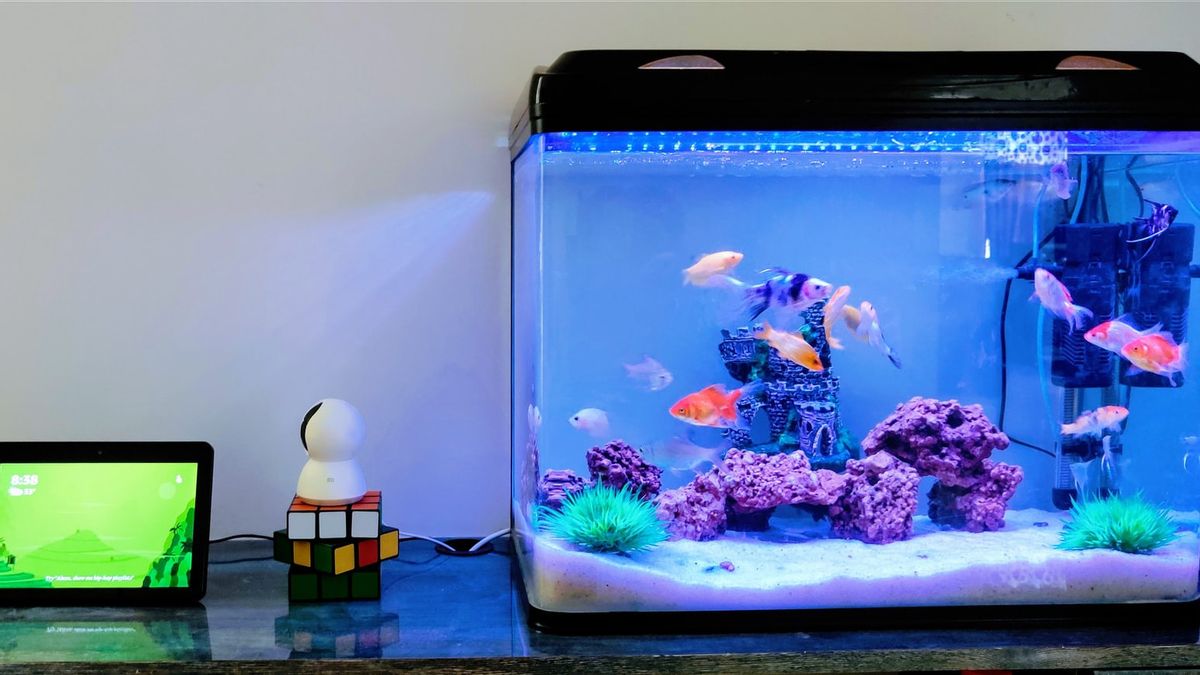YOGYAKARTA – Caring for fish in an aquarium, it is necessary to do several things to maintain the health of the ecosystem in it. If fish are cared for properly, they will rarely experience problems, such as getting sick. So what needs to be done for a school of fish in your aquarium at home? Here are tips that should be done regularly.
1. Measure the acid-base balance of waterWater is the main living medium for fish. Therefore, it is necessary to measure the acid-base in water. Reported by The Spruce Pets, Sunday, June 5, before adding fish or other living creatures in the aquarium, test the water content. Those that need to be tested include the content of ammonia, nitrate, nitrite, and pH.
Test results other than pH, must read zero before using to fill or replace water in the aquarium. For a balanced pH, the acid-base must be between 7.0 and 7.8. The size of the acid-base depends on the species of fish being kept.
2. Aquarium temperatureMake sure the temperature in the aquarium matches the 'inhabitants' of the aquarium. To find out the ideal temperature measurement, use a thermometer. This is to anticipate the water temperature in the aquarium is too cold or too hot. In fresh water, the temperature is generally 21 to 27 degrees Celsius.

Filtering or filtration is the 'heart' of any aquarium. Because with filtration, the life of the ecosystem in the aquarium can be controlled. There are a variety of filters available at pet stores, including undergravel filters that use a pump to circulate air. The flow of water through the filter should be about four times the volume of the tank. For example, suppose a 20 gallon tank must have a filter flow of 80 gallons per hour.
4. Number of fish in the aquariumIf the tank is overcrowded with too many fish, it can cause problems. This means you need to make sure you don't add too much fish. Adjust to the size of the aquarium. If filled with freshwater fish, they need a surface area of 13 square centimeters per fish for a fish size of 2.5 centimeters. As for saltwater fish, the ratio is 2.5 centimeters of fish per 8 liters of water. For outdoor ponds, every 25 centimeters of fish need 500 liters of water.

It is important to know all the information about the fish species being kept. What is the ideal food like, how big is it when it grows up, what kind of fish to keep, and so on. Also, plan stocking rates based on the size of the adult fish, not the size when you bought them.
Also find out about whether the fish matches the other fish you already have. For example, large canivores do not do well if added to an aquarium with guppies, tetras, or other small fish. Also know about water quality in the natural habitat of fish.
6. Give enough foodKeeping new fish, introduce them into the aquarium first after adjusting the filter and water quality. Since bacteria take time to grow, add fish to a new tank for 4-6 weeks after setting it up. When adding new fish, first quarantine them in a separate tank.
Adult and younger fish are fed twice a day. Only feed as much food as will be eaten within 3-5 minutes. Otherwise, excess food will decompose at the bottom of the tank and cause other problems such as high ammonia, phosphate and nitrate levels. This problem can encourage the growth of algae that contaminate the aquarium.
7. Change the water regularlyWater changes need to be done regularly. the recommendation, about 10-15 percent every one to two weeks. It is recommended to use a gravel vacuum to remove water and dirt at the bottom of the water. Then refill with water of ideal temperature and acid-base balance.
Those are the seven basic tips in maintaining the health of fish in an aquarium. In addition to carrying out the tips above, it is necessary to know more about the fish species that are kept and the common diseases that attack.
The English, Chinese, Japanese, Arabic, and French versions are automatically generated by the AI. So there may still be inaccuracies in translating, please always see Indonesian as our main language. (system supported by DigitalSiber.id)













